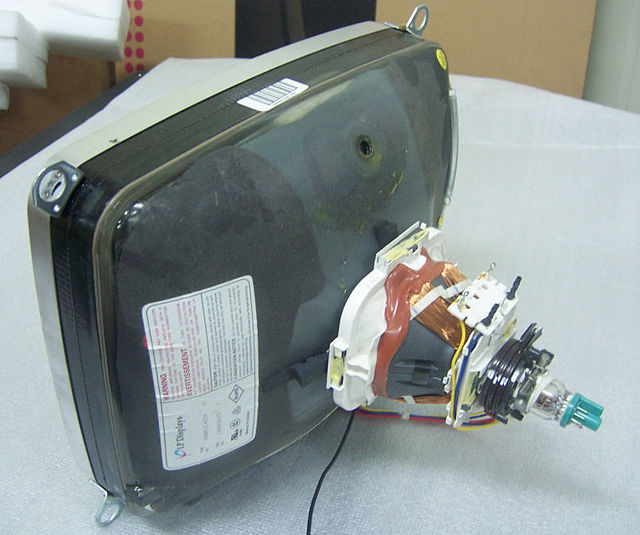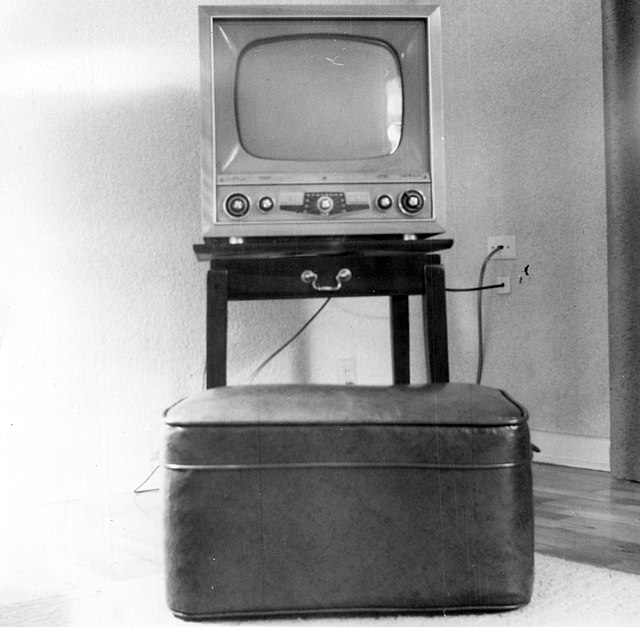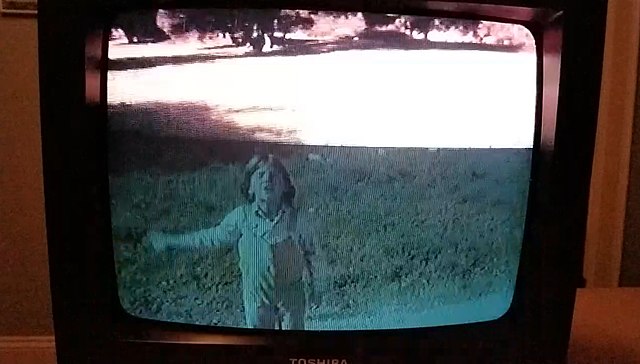The mass-to-charge ratio (m/Q) is a physical quantity relating the mass (quantity of matter) and the electric charge of a given particle, expressed in units of kilograms per coulomb (kg/C). It is most widely used in the electrodynamics of charged particles, e.g. in electron optics and ion optics.
Beam of electrons moving in a circle in a Teltron tube, due to the presence of a magnetic field. Purple light is emitted along the electron path, due to the electrons colliding with gas molecules in the bulb. Mass-to-charge ratio of the electron can be measured in this apparatus by comparing the radius of the purple circle, the strength of the magnetic field, and the voltage on the electron gun. The mass and charge cannot be separately measured this way—only their ratio.
A cathode-ray tube (CRT) is a vacuum tube containing one or more electron guns, which emit electron beams that are manipulated to display images on a phosphorescent screen. The images may represent electrical waveforms on an oscilloscope, a frame of video on an analog television set (TV), digital raster graphics on a computer monitor, or other phenomena like radar targets. A CRT in a TV is commonly called a picture tube. CRTs have also been used as memory devices, in which case the screen is not intended to be visible to an observer. The term cathode ray was used to describe electron beams when they were first discovered, before it was understood that what was emitted from the cathode was a beam of electrons.
Oscilloscope cathode-ray tube
The rear of an LG.Philips Displays 14-inch color cathode-ray tube showing its deflection coils and electron guns
Typical 1950s United States monochrome CRT TV
Snapshot of a CRT TV showing the line of light being drawn from left to right in a raster pattern





